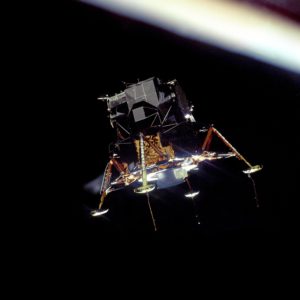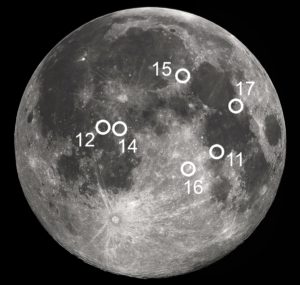Land the “LEM” Contest for Schools


This is an event to commemorate the 50th Anniversary of the six Apollo Moon Landing Missions and promote interest in STEM among students. The contest objective is to launch a model rocket and have it land on an area in a field representing the moon. The contestant whose rocket lands closest to the appropriate mission landing site is the winner.
Note: LEM stands for Lunar Excursion Module, later simply called the Lunar Module (LM).
Suggested Contest Rules
- The contest is open to all model rocketeers.
- Contestants must follow the National Association of Rocketry (NAR) Safety Code.
- Modelers must provide their own model rockets, wadding, engines, and prepping tools. The sponsoring organization will provide the launch equipment suitable for 1/8” diameter launch lugs.
- Contestants may fly either as an individual or as part of one team. Entry as both team and individual competition is not permitted.
- Model rockets must use a single (NAR classification and safety certified) engine for each flight that is a “C” class engines or less.
- Total weight of the model rocket with engine must be less than four ounces.
- Model rockets must pass a preflight safety, engine and weight inspection at the launch site prior to launch.
- Model rockets must land safely by a recovery system using either a streamer or parachute for their recovery. If the rocket’s landing is unsafe the flight will be disqualified.
- Model rockets must not separate into two or more unattached parts during flight.
Suggested Contest Judging
- Modelers may launch their models one time.
- A launch is a successful ignition of the engine so that the model leaves the launch pad.
- The object of the event is to determine whose flight comes closest to reaching the center of a circular 150’-diameter “Moon” marked on the ground.
- If a model rocket lands on the “Moon,” contestants must leave the model rocket undisturbed until the model rocket is measured.
- Officials will measure all model rockets that land within the “Moon’s” boundaries.
- Measurement will be from the “Moon’s” center marker to the tip of the model rocket’s nosecone. The measurement becomes the contestant’s score.
- The person with the smallest measurement (i.e., closest to the “Moon” center) will be declared the winner. The next smallest score will be second place and so on.
- The contest can be flown in two age divisions: one is for those 15 years and younger; the other is for those 16 years and older. Teams will be classified by the age of the oldest team members.
- Decisions of the judges are final.
Suggested Schedule
–Contest Registration Begins 15 minutes before flying starts.
–Contest (Flying Period) – allow two hours, depending on the number of entries.
–Awards Ceremony to follow the end of flying.
 Overview
Overview
The NAR offers this “Land the LEM” contest idea to schools and student rocket clubs to conduct any time during the anniversary celebrations of all the Apollo Moon Landing Missions (Apollo 11 to Apollo 17), but suggest doing it while school is in session during the fall, winter, and spring months. Teachers can supervise the launches and integrate them into classroom lessons. Science museums, CAP, 4-H, AFJROTC and similar community organizations could also host this rocket launch and landing contest on their own or in partnership with NAR members. It’s also an excellent outreach device for TARC teams.
Host Requirements
The group hosting the event must have a reliable launch pad and firing system, and access to a suitable size field. Several pads can be set up with the controllers at a single point. Beside the range equipment they will need a long tape measure, a post to mark the center target, and some ground markers like flags, tape or chalk to create the ‘moon’ boundary. There will need to be at least two adults to conduct the event; one to perform the launches and the other in the field to measure and score the landings. More members assisting will help the event go more smoothly. The score tabulation process is left to the organizers, but flight cards are recommended. The number and type of awards are at the discretion of the group, but at least three places with some kind of trophy would be nice. We suggest you find sponsors to donate the prizes. An alternative to using the Moon as the “target” is to use an outline of the big Saturn V. Details on this as well as a way to create a visual display of the Saturn V’s awesome height can be found in the “Related Documents” area at the bottom of this page.
Follow up
The school or group conducting the event should send a note about their event to the NAR at https://www.facebook.com/groups/NAREducation/ or reference their own posting on social media. Provide the host name, the contest date, and number of participants. You’ve likely stimulated the interest of many young people with this launch, so continue the learning adventure with more activities as given in NAR’s education resources at https://www.nar.org/educational-resources/